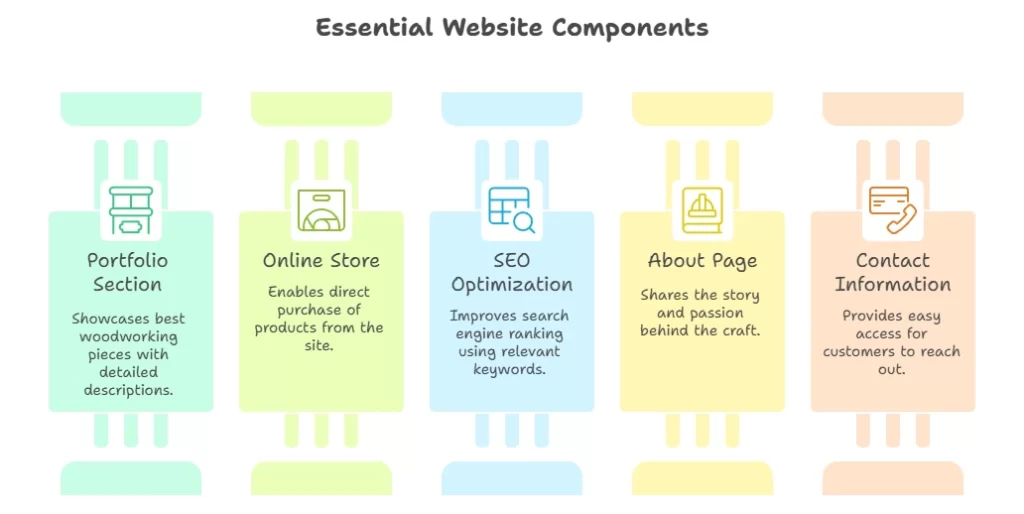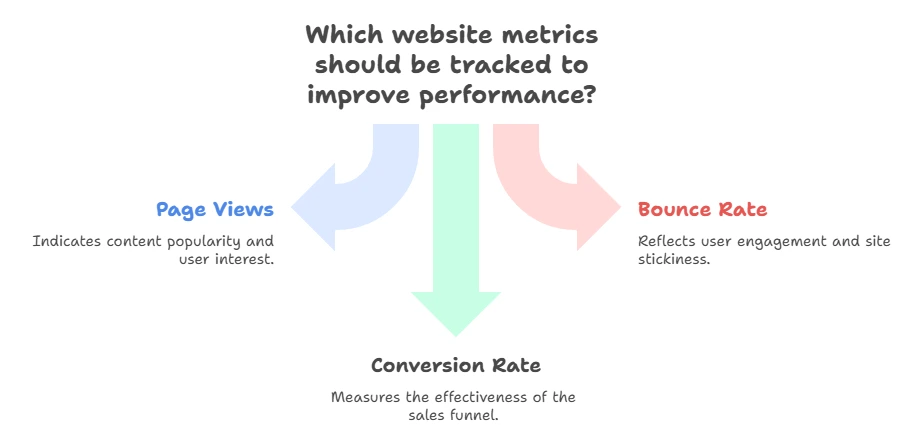
Establish Your Brand Identity
Your brand is more than just your name; it’s how customers perceive you. Start by defining your unique selling proposition. Ask yourself what makes your craft special and why customers should choose you over competitors. Craft a compelling brand story that resonates with your target audience.
Utilize Social Media Platforms
Social media platforms are invaluable for connecting with potential customers. Find out where your audience spends their time—Instagram, Pinterest, Facebook, or TikTok—and tailor your content accordingly. Highlight your work through engaging posts, stories, and videos. Here are some tips to effectively use social media:
- Post Regularly: Maintain a consistent posting schedule.
- Visual Content: Share high-quality images and videos of your woodworking projects. Platforms like Instagram and Pinterest are particularly effective for visually-driven content.
- Engage with Your Audience: Use stories, polls, and live sessions to connect directly with your followers. Engagement increases loyalty and builds a community around your brand.
- Collaborate with Influencers: Partner with woodworking influencers or local artisans to expand your reach and tap into their audience.
- Use Hashtags: Use relevant hashtags to increase visibility.
Your content should resonate with your audience and promote interaction. Here are several content ideas to engage local customers:
- Show Behind-the-Scenes: Share the process of creating your woodworking projects. This personal touch can help followers connect with your craft.
- DIY Tips: Share your knowledge! Post videos or images with tips for woodworking enthusiasts.
- Customer Highlights: Showcase pictures of satisfied customers enjoying your products. Tag them to encourage sharing.
Create a Compelling Website

Your website serves as your online business card. Make sure it reflects your brand effectively:
- Portfolio Section: Showcase your best woodworking pieces with detailed descriptions. This helps potential customers see your skill and variety.
- Online Store: If possible, set up an e-commerce section. This allows customers to purchase your products directly from your site.
- SEO Optimization: Use keywords like “custom woodworking,” “handmade furniture,” and “wood crafts” in your site’s content to improve your search engine ranking.
- About Page: Share your story and passion for your craft.
- Contact Information: Make it easy for customers to reach you.
Platforms like Wix or Shopify offer user-friendly tools that can help you create a professional-looking website without needing coding skills.
Leverage Online Marketplaces
Consider selling your work on online marketplaces like Etsy or Amazon Handmade. These platforms already have a built-in audience, making it easier for you to reach potential customers. Make sure to optimize your listings with:
- High-Quality Images: Attractive visuals are key.
- Detailed Descriptions: Describe your craftsmanship clearly.
- Keywords: Use relevant keywords to boost search visibility.
Utilize Local Hashtags
Using local hashtags can help attract customers from your area. Look for popular hashtags related to woodworking and your town. A few to consider might be:
- #YourBusinessName
- #LocalWoodwork
- #YourTownCrafts
Attend Local Craft Fairs and Markets
Participating in local events can increase your visibility and help you network with other artists:
- Showcase Your Work: Set up a booth to display your woodworking projects. Offer samples or small giveaways to attract visitors.
- Collect Contacts: Use sign-up sheets to collect email addresses for your marketing campaigns.
- Networking: Connect with other artisans, which can lead to collaboration opportunities or even referrals.
Use Email Marketing
Email marketing remains one of the most effective ways to reach your customers. Here’s how to do it right:
- Build Your List: Encourage website visitors to subscribe for updates, discounts, and news about your woodworking endeavors.
- Value-Driven Content: Send newsletters that include woodworking tips, project ideas, and exclusive offers to keep your audience engaged.
- Personalization: Use your subscribers’ names and tailor content to their interests to increase open rates and engagement.
Email marketing allows you to maintain direct communication with your customers. Build an email list by offering a newsletter or special promotions. Share updates on new products, upcoming events, or behind-the-scenes content. Tools like Mailchimp can help you manage your campaigns efficiently.
Join Online Woodworking Communities
Being part of online forums or groups can help you connect with potential customers as well as other woodworkers:
- Share Knowledge: Contribute valuable content, such as tutorials or project ideas, to establish yourself as an authority in the woodworking community.
- Promote Your Work: Share links to your website or social media in a non-promotional manner to build interest.
- Learn from Others: Observe what other successful woodworkers are doing for marketing and try to adapt those strategies.
Connecting with fellow artisans can open new doors. Attend local craft fairs, workshops, or online forums. Collaborate with other artists, share each other’s work, and engage in joint promotions. These relationships can cultivate a supportive community and broaden your customer base.
Engage with Your Community

Building a local customer base involves more than just posting content. Engaging directly with your community is vital.
- Respond to Comments: Always reply to comments on your posts. It shows that you value your audience’s input and builds relationships.
- Join Local Groups: Find Facebook groups or forums focused on local crafts or businesses. Participate actively to get your name out there.
- Host Giveaways: Consider running a local giveaway. This is a fun way to engage with your audience and promote local sharing.
Leverage Customer Reviews and Testimonials
Customer feedback is invaluable. Here’s how to use it effectively:
- Request Reviews: After a sale, ask your customers to leave a review. Most will be happy to support artisans they appreciate.
- Showcase Testimonials: Feature positive reviews prominently on your website and social media to build trust with potential customers.
- Incorporate Feedback: Use reviews to improve your products and services, showing customers that you value their opinions.
By employing these strategies, you can effectively market your small woodworking business and reach a wider audience. For further guidance and resources specific to woodworking, explore websites like Wood Magazine and Woodworkers Source.
Investing time into learning how do I market my small woodworking business effectively will pay off in the long run, helping you to grow your brand and customer base.
Run Targeted Ads
If your budget allows, consider running pay-per-click (PPC) ads on platforms like Google or social media. Target your ads based on demographics, interests, and behaviors to reach potential customers effectively.
Both Facebook and Instagram offer targeted advertising options that allow you to reach specific demographics locally. You can target people based on location, interests, and behaviors. This can effectively promote your woodworking products to a relevant audience.
Collaborate with Local Influencers
Find local social media influencers passionate about crafts or sustainability. Collaborating with them can give your woodworking business an authentic voice. They can help spread the word about your products, which can lead to increased visibility and sales.
Measure and Adapt Your Strategy
Analytical tools like Google Analytics can provide insights into your website traffic, helping you understand what works best. Track metrics such as:
| Metric | What It Indicates |
|---|---|
| Page Views | Popularity of specific content |
| Bounce Rate | Engagement level on your site |
| Conversion Rate | Effectiveness of your sales funnel |

Analyze your performance regularly and adjust your strategy based on the data you collect. This adaptability will keep you relevant and competitive in the marketplace.
Building a strong online presence requires time and effort but can greatly benefit your craft. By establishing your brand identity, creating a professional website, utilizing social media, networking, leveraging online marketplaces, implementing email marketing, running targeted ads, and measuring your strategy, you will cultivate a compelling online presence that resonates with your audience and drives sales.
Regularly checking your analytics can help you understand what content works best. Monitor engagement rates and post reach. Use this data to refine your strategy. Key metrics to watch include:
| Metric | Description |
|---|---|
| Engagement Rate | The level of interaction your posts receive (likes, shares, comments). |
| Reach | How many unique users have seen your posts. |
| Click-Through Rate | Percentage of users who click on your links in posts. |
Combining imagination and strategy will enable you to effectively utilize social media for your small woodworking business. For further inspiration and tools, explore resources like SBA – Social Media Marketing for Small Business, or Canva for design templates. Engaging with your local community through social media not only promotes your business but nurtures relationships that can lead to lasting success.
The Importance of Networking in the Woodworking Community

Building connections within the woodworking community can serve as a significant advantage for both hobbyists and seasoned professionals. Networking opens doors to opportunities, skills exchange, and collaboration that can help you grow your small woodworking business. Here’s how you can tap into the power of networking effectively.
Join Woodworking Clubs and Online Forums
Joining woodworking clubs and online forums is one of the first steps you should take. Clubs or local meet-ups can introduce you to other woodworkers who share your passion. You can find valuable insights about Woodworkers Guild that provides a community for those in the field. These local connections often lead to mentorship opportunities. Meeting others face-to-face allows you to share experiences, tools, and techniques that you might not be able to learn on your own.
Leverage Online Platforms
Online platforms like social media or woodworking forums are equally powerful. Websites like Facebook and Instagram not only let you showcase your work but also connect you with like-minded individuals. By joining woodworking-related groups, you can share your projects and gain feedback. This is a fantastic way to refine your skills and market your offerings. You can also follow and engage with woodworkers on their profiles to build connections while learning from their experiences.
Participate in Woodworking Shows and Craft Fairs
Participating in woodworking shows or local craft fairs is another effective way to network. These events allow you to present your work to a broader audience. You can meet potential customers, learn about emerging tools, and connect with suppliers. Being active in your community can also enhance your visibility as a credible craftsman, making it easier for people to reach out to you for collaborations.
Consider Woodworking Workshops
Consider starting or joining a woodworking workshop. Workshops bring together novices and experts alike, creating a learning environment where knowledge can be freely exchanged. Engaging in this atmosphere not only hones your skills but also strengthens your network. When people are familiar with your talent, they are more likely to refer customers to you. A great resource for finding workshops can be the Wood Magazine Workshop Finder.
Utilize Online Learning Platforms
It’s important to also leverage online learning platforms. Websites like The Wood Whisperer provide a variety of resources, including forums, blogs, and videos that can help you improve your craftsmanship while connecting with audiences interested in woodworking. Engaging in discussions on these sites can enhance your network while also giving you access to expert advice.
Connect with Local Hardware Stores and Lumber Yards
Additionally, consider reaching out to local hardware stores and lumber yards. Establishing a good relationship with them can lead to referrals and recommendations when customers seek woodworking services. Sometimes, businesses are open to collaborating on events or promotions, which can be a win-win for both parties.
Build Partnerships with Other Businesses
Building partnerships with other businesses can enhance your brand visibility. Collaborating with home decor stores or interior designers can create opportunities for joint marketing. It’s essential to approach these businesses with a well-prepared pitch on how do I market my small woodworking business skills can add value to their services. This can result in mutually beneficial arrangements.
Give Back to the Community
Networking is not just about self-promotion; it also involves giving back to the community. Share your expertise by offering to teach a class or participate in community service. This helps build goodwill among fellow woodworkers and makes you a more recognized figure within the local scene.
Follow Up on Connections
A networking strategy isn’t complete without follow-ups. Maintaining relationships is key once you’ve made connections. Use email or social media to stay in touch. Share interesting articles, tools, or even your recent projects. This keeps the connection alive and can bring future business opportunities.
Remain Open to Learning
Remember to remain open to learning. The woodworking community can be an incredible source of knowledge, and every interaction offers a chance to learn something new. Engage genuinely and authentically, which can help develop trust and respect among your peers.
So, whether you’re sharing tips, asking for advice, or collaborating on projects, remember: every connection can potentially lead to new customers, skills, or opportunities for your small woodworking business.
Video Content and Tutorials
Many potential customers enjoy learning about the process behind the product. Creating video content can draw in those who appreciate craftsmanship. Consider:
- Tutorials: Showcase how you create certain types of woodworking projects. This not only establishes your authority but also engages viewers.
- Live Streams: Go live while working on a project. Interacting with viewers in real-time can build community and loyalty.
- Platform Choice: Utilize YouTube for long-form content and TikTok for shorter, snappy videos to maximize your reach.
Collaborate with Other Artists
Forming partnerships with other artisans can expand your reach. You might:
- Joint Projects: Team up on projects that blend different skills and styles, allowing you to cross-promote each other’s work.
- Guest Blogging: Write guest posts on established blogs to showcase your expertise and link back to your website.
Sell Through Local Stores
Some local shops may be interested in selling your woodworking products. To make this work:
- Consignment: Approach shops and offer a consignment deal, giving them a percentage of the sales.
- Product Presentation: Ensure your items stand out by arriving with quality packaging and informative tags.
Implementing these creative strategies can significantly present your woodworking projects to potential customers. Don’t hesitate to test out new methods and see what resonates best with your audience!
For more insights, visit Woodworking Network and Etsy for resources related to woodwork marketing and selling tips.